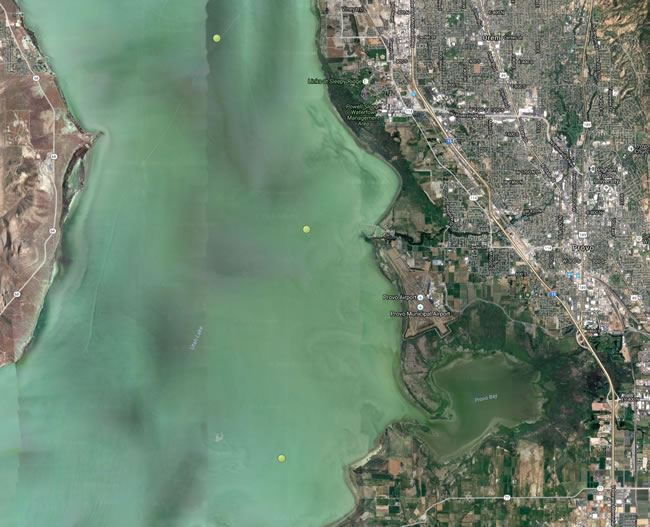News Article
September 8, 2016
Updates on the Algae Bloom in Utah Lake
Recent headlines in newspapers across the Wasatch front have featured expanded coverage of local algal blooms affecting the lives and livelihoods of Utah’s residents. As communities brace for further challenges in light of climate change, population growth, and aging infrastructure, people are beginning to ask questions about the complex nature of Utah’s water system.
The Salt Lake Tribune published a comprehensive three-part story this past week on the continuing struggles that Utah faces with harmful algal blooms (HABs), entitled “Waste Water?” The article examines many of the complications associated with July’s massive bloom of toxic algae in Utah Lake. In the article, Emma Penrod explores the causes, concerns and costs, both economic and environmental, of addressing the long-term effects caused by HABs to Utah’s waterways along the Wasatch front.
iUTAH’s Erin Jones, PhD student at Brigham Young University, and GAMUT technicians Dave Eiriksson and Dylan Dastrup helped deploy the new algae-tracking sensors in Utah Lake, installed on Monday August 29. These water quality data buoys send data every 60 minutes. This up-to-date information is monitored at the Utah Lake HAB Network and is available at the Utah Division of Water Quality (UDWQ) website. UDWQ states on their website that “these sites in time will be used in conjunction with a model that will be used to forecast for potential HABs.”
“I am excited that attention has been drawn to the issue and hopefully the best possible science and management can come together to find and reach a realistic, improved future for Utah Lake,” says Jones, who is also a Provo native. She adds that she “learned the virtues of Great Salt Lake after finally going out to do research on HABs in Farmington Bay several years ago, but still held the prejudices against Utah Lake that being a local had ingrained in me.” She likes to tell people that "if you think the lake is trash, it's because we've treated it like trash."
With many specialists in the field ranging from biologists to social scientists and engineers, iUTAH is doing what it can to support and help the state and municipal agencies addressing these issues. iUTAH, a National Science Foundation funded project, is an interdisciplinary research and training program aimed at strengthening science for Utah’s water future.
Press: Salt Lake Tribune

« Back to list of all news articles


